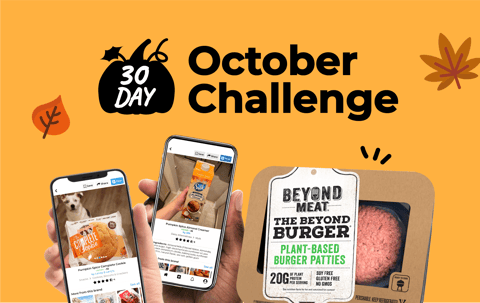This article has been contributed by Emma Hakansson, a member of abillion, animal activist, model and filmmaker.
The wool industry is not only inherently cruel but absolutely unsustainable. There are all sorts of materials we can wear instead of wool that are better for people, the planet and animals, like sustainably sourced cotton, hemp, recycled cotton, Tencel, bamboo lyocell, recycled synthetics, and more. While there’s plenty to talk about these materials, first, let’s look at 10 reasons it’s worth opting for them, over wool from sheep and alpacas.
 Data from Sustainable Apparel Coalition, graph from Collective Fashion Justice.
Data from Sustainable Apparel Coalition, graph from Collective Fashion Justice.
1. Wool is one of the most environmentally impactful materials of all to produce.
Surprising, right? Despite what we’ve all been led to believe, when considering impacts like water scarcity, eutrophication, global warming, chemistry, and fossil fuel use, alpaca wool is the single most environmentally impactful material to produce, and sheep’s wool is up there too — mostly after other animal-derived materials and skins.
 Data from Sustainable Apparel Coalition, graph from Collective Fashion Justice.
Data from Sustainable Apparel Coalition, graph from Collective Fashion Justice.
2. Wool is worsening the climate crisis.
When we look specifically at the global warming impact of different materials, the data shows that alpaca wool and sheep’s wool are the second and third most harmful materials, only after silk!
This is largely because these animals are ruminants, meaning they have more than one stomach and release methane into the atmosphere as they digest; breathing, passing gas and belching.
 Sheep being loaded onto a truck for slaughter. Jo-Anne McArthur / We Animals.
Sheep being loaded onto a truck for slaughter. Jo-Anne McArthur / We Animals.
3. The wool industry is a slaughter industry.
This one might be a ‘wait what?!’ moment for some, but that’s not surprising given so many brands claim their wool to be ‘ethical’ and ‘cruelty-free’.
In reality, when sheep (and alpacas) are not producing wool of a high enough quality to be considered profitable, they are killed.
Sometimes this is because the industry thinks that a slaughtered sheep’s flesh is worth more money than their wool, and other times it’s because they’ve gotten older, and their wool has aged and brittled just like our hair does. This normally happens halfway into a sheep’s natural lifespan.
 Sheep running through cleared pasture (Unsplash)
Sheep running through cleared pasture (Unsplash)
4. Plant-based materials are far more land-use efficient.
Did you know that to produce one bale worth of Australian cotton as compared to wool, 367 times less land must be cleared or kept cleared? This is a huge difference, and the less land-efficient the production of our clothing is, the less space there is for actual nature, for native plant and animal species to thrive.
Similarly, hemp grows densely and so could be considered even more land efficient than cotton. Wearing wool is stopping us from rewilding land that can sequester carbon, in turn reducing greenhouse gas emissions.
Imagine if just some of the flat land here were full of growing cotton or hemp, and the rest was forestry again!
5. Sheep in the wool industry are legally and painfully mutilated.
Unfortunately, even before sheep have their lives taken from them, they suffer. Sheep in the wool industry legally and routinely have their tails cut off without any pain relief. Most commonly, this is done with a sharp, and even hot knife, or with painfully tight rubber bands.
No one deserves that.
 Microfibres that shed from clothes. (via Ocean Clean Wash)
Microfibres that shed from clothes. (via Ocean Clean Wash)
6. If you’re seeking biodegradable fibres, plant-based has got your back!
It’s important that we wear lots of biodegradable materials, because anything that can’t biodegegrade will stick around for thousands of years -- whether it’s recycled (ideally), or sent to landfill (not so ideal). Also, synthetic materials shed into microfibres that can end up in our oceans, each time we wash our clothes. This is far from ideal, too.
This is a reason many people claim that we need to wear wool in winter. In reality though, even wool, and plant-based fibres can become synthetic-like microfibres in the ocean, if they are dyed with non-biodegradable substances. Yikes.
Luckily, there are brands and initiatives that are aware of this problem, producing knitwear from plants and recycled non-animal materials, that are both undyed, and dyed with biodegradability in mind.
 This knitwear is made of Tencel, a great example of a total ethics wool alternative material. (via Ecological Textiles)
This knitwear is made of Tencel, a great example of a total ethics wool alternative material. (via Ecological Textiles)
7. Wool alternatives can be made in total ethics supply chains.
A total ethics supply chain is a kind of system that produces clothes while valuing the life and wellbeing of humans, non-humans and the planet. Some brands label themselves ‘ethical’ while only looking after humans who make their clothes, while harming animals. Others protect animals, but not the people making their clothes. Neither of these are truly fair.
In the wool industry, there are all sorts of problems, as we’ve seen. Fortunately, many plant-based and recycled materials not only protect sheep, but they protect the planet, too. They can also be produced in supply chains that are totally ethical, certified and ensured to be safe for humans, and all life.
 A still from Willow and Claude, featuring non-feeling cotton.
A still from Willow and Claude, featuring non-feeling cotton.
8. Plants don’t have feelings.
It may be obvious to you, but the reason it matters that sheep are treated terribly in the wool industry is that sheep feel pain. As sentient beings, they are capable of feeling pain, but also pleasure. Just like any other animal -- a human, a dog, or a cat -- sheep experience the world uniquely, and don’t deserve to be treated like objects.
Unlike sheep, plants don’t have feelings. It’s nice to wear something that didn’t come from suffering!
 Wool scouring in progress. (FibreShed)
Wool scouring in progress. (FibreShed)



